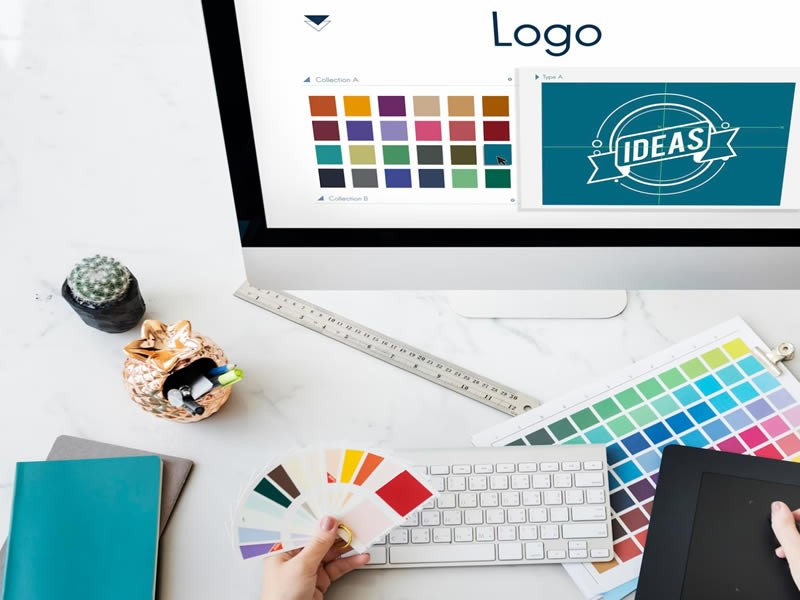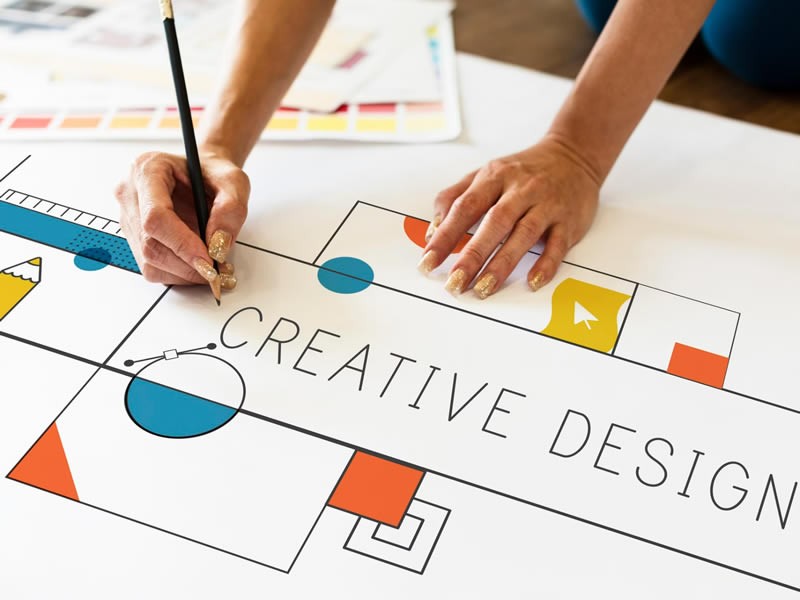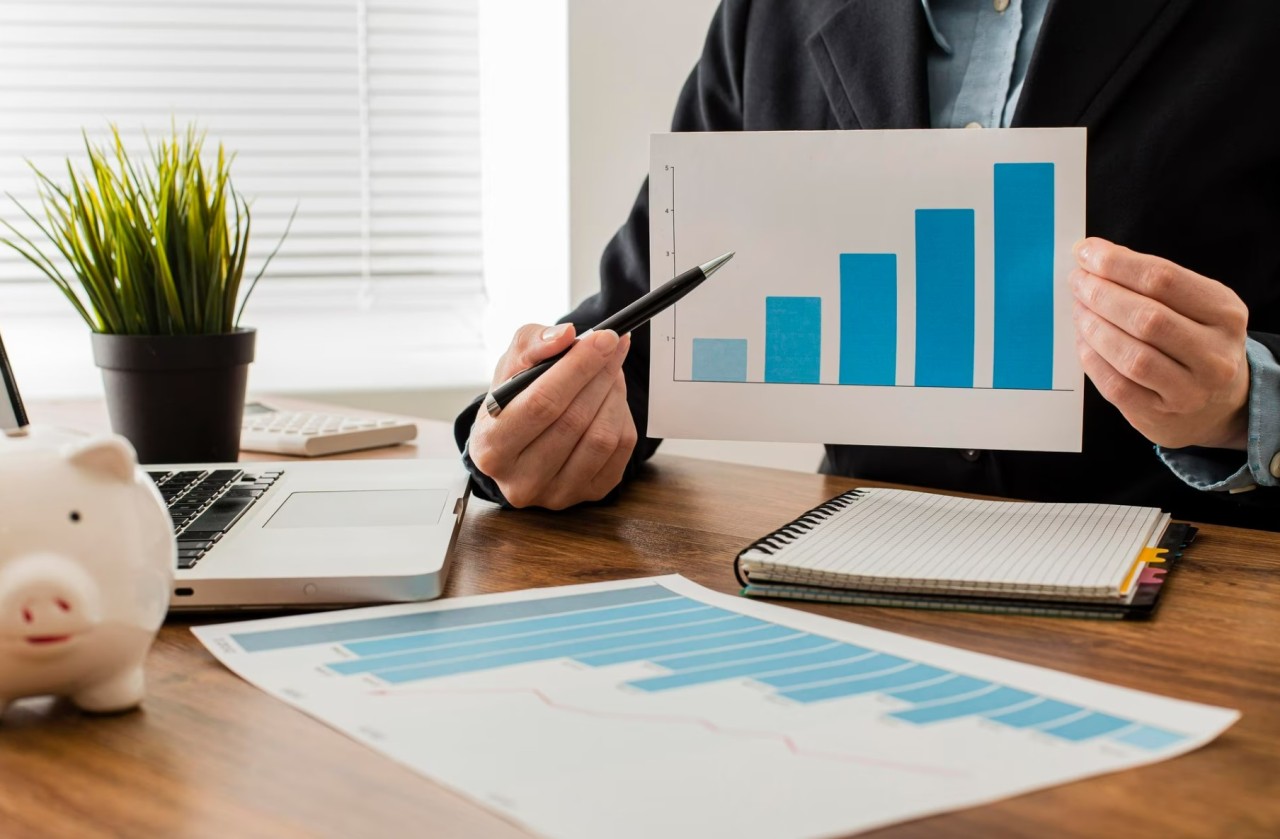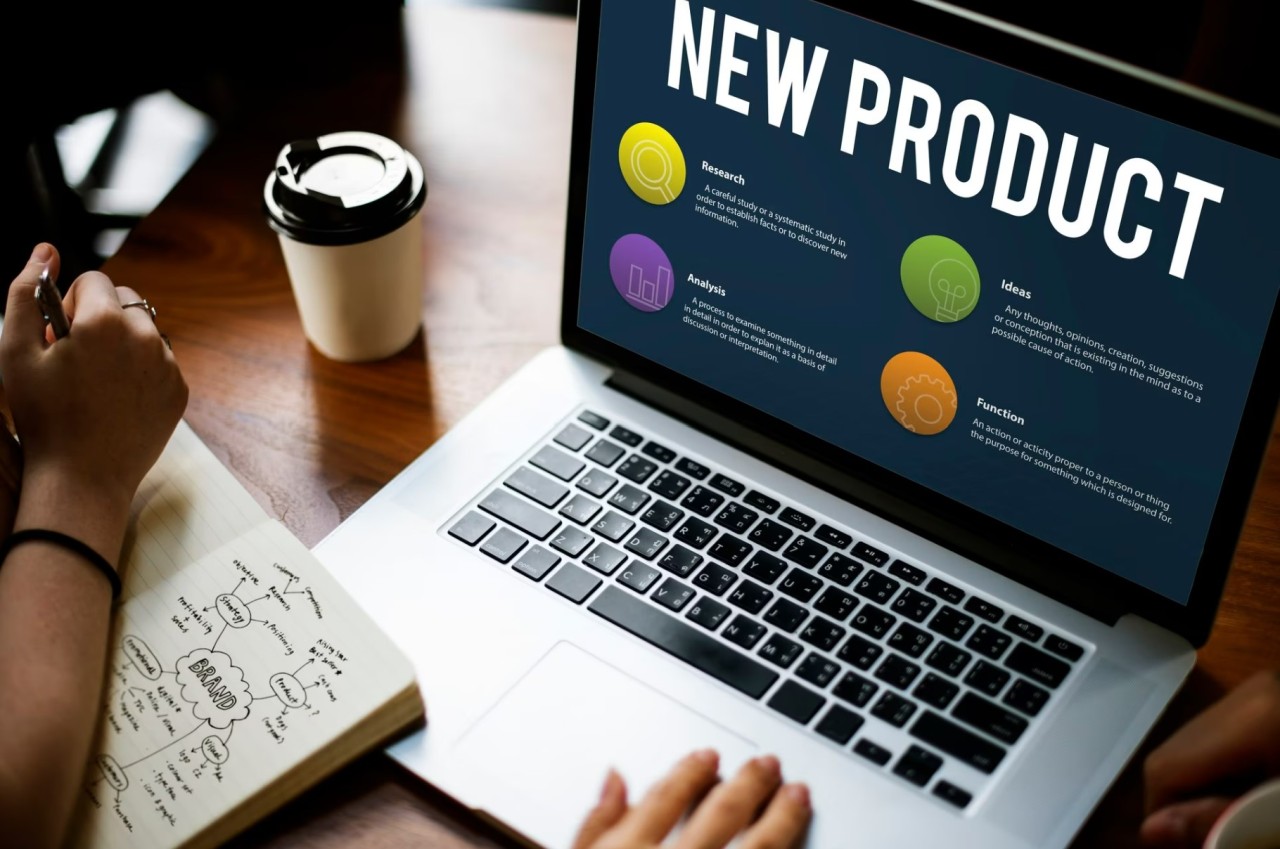Insight Blog
Agility’s perspectives on transforming the employee's experience throughout remote transformation using connected enterprise tools.
17 minutes reading time
(3344 words)
How to Grow Your Business With Product Design
This article explores how businesses can leverage product design to their advantage, highlighting the significance of product design companies in driving business growth.
In today's competitive business landscape, the key to success lies in standing out.
One powerful way to achieve this is through exceptional product design.
A well-executed product design enhances the aesthetics of your offerings and improves their functionality and user experience.
By partnering with a reputable product design company, you can unlock new avenues of growth and innovation.
This article explores how businesses can leverage product design to their advantage, highlighting the significance of product design companies in driving business growth.
What is product design?
Product design involves the generation, development, and refinement of a design to ultimately create a final product that fulfills a particular user or market need.
During this phase of product development, the focus is on evaluating both functionality and aesthetics, ensuring that the product aligns with business objectives and user requirements.
To begin the process, you and your design team establish a clear vision for the product.
As the iterative design process unfolds, adjustments and enhancements are continuously made, tailored to the specific product and industry, such as beverage development.
This collaborative effort typically involves UX designers, graphic designers, market research analysts, engineers, and other contributors.
By implementing a structured design process, effective communication among team members is ensured.
Here are the 5 steps to Product design:
- Step 1: Target Market Research
- Step 2: Initial Concept Design
- Step 3: Sketches, Drawings, and more Sketches
- Step 4: Prototyping
- Step 5: Consumer Feedback
Also, the product undergoes rigorous testing to ensure it performs as intended, resulting in improved product quality. Additionally, incorporating efficient and automated workflows aids in reducing time to market as necessary.
The History of Product Design?
Product design is an evolution stemming from a closely related discipline known as industrial design.
The Industrial Designers Society of America defines industrial design as the professional practice dedicated to creating products used by millions of people worldwide on a daily basis.
Beyond merely focusing on a product's appearance, industrial designers also emphasize its functionality, manufacturing process, and the overall value and user experience it delivers.
In the past, before the era of mass production, skilled craftspeople meticulously handcrafted products, resulting in limited availability and higher costs. However, with the advent of industrialization in manufacturing, businesses gained the ability to produce goods on a massive scale at a lower cost.To cater to the growing consumer base that could now afford these mass-produced products, manufacturers sought the expertise of industrial designers to develop items that not only served their purpose effectively but also possessed appealing aesthetics.
With time, a subset of industrial design emerged as a distinct category known as product design.
While industrial design predominantly encompasses physical objects like furniture and household appliances, product design extends its scope to include any type of product, including digital and virtual items like software applications.
8 Impact of Product Design in Business
Product design plays a crucial role in shaping the success and growth of a business. It goes beyond just aesthetics and encompasses various aspects that can significantly impact a company's performance.
Here are some key ways in which product design influences a business:
1.Brand Image and Perception
The design of a product reflects the values, identity, and personality of the brand.
A consistent and aesthetically pleasing design language helps establish a strong brand image and creates a positive perception in the minds of consumers.
This perception can influence purchasing decisions and overall brand loyalty.
2.Customer Experience and Satisfaction
The design of a product directly influences how customers interact with it. A well-designed product enhances the user experience, making it easier to understand, navigate, and use.
A positive user experience leads to higher customer satisfaction, increased brand loyalty, and positive word-of-mouth, all of which are essential for business growth.
3.Competitive Advantage
In today's competitive market, product design can be a differentiator. Unique and innovative product designs can set a company apart from its competitors and attract a broader customer base.
A distinct product design can also act as a barrier to entry for competitors, as it becomes harder to replicate.
4.Functionality and Performance
Beyond appearance, product design impacts the functionality and performance of the product. An effective design takes into account user needs and addresses them efficiently.
A well-designed product performs better and fulfills its intended purpose, which is crucial for customer satisfaction and repeat business.
5.Cost Efficiency and Manufacturing
Proper product design can optimize the manufacturing process, reducing production costs and wastage.
By considering factors like materials, assembly, and logistics during the design phase, businesses can enhance efficiency and profitability.
6.Market Adaptability
Consumer preferences and market trends are constantly evolving. A flexible product design that can be easily updated or modified allows businesses to adapt to changing market demands more swiftly.
This adaptability can lead to the creation of new revenue streams and sustainable growth.
7.Risk Mitigation
Investing in thorough product design and prototyping can help identify potential flaws or issues early in the development process.
Addressing these concerns before mass production reduces the risk of costly recalls or negative customer feedback, protecting the company's reputation and financial stability.
8.Innovation and R&D
A culture of continuous improvement and innovation is fostered by a strong focus on product design.
Companies that prioritize design invest in research and development to stay ahead in the market, fostering a creative and dynamic environment.
7 Ways to Implementing Product Design for Business Growth
Now that we understand the significance of product design, let's explore how businesses can effectively implement it to foster growth and success.
Follow us and access great exclusive content everyday: Follow us on Google News
1. Identify Market Needs
Before diving into the product design process, it's crucial to identify the specific needs and pain points of your target market.
This can be achieved through conducting comprehensive market research and meticulously accumulating valuable insights from potential customers, which will serve as the bedrock upon which your design choices shall be predicated.
By attentively engaging in this preliminary phase, you lay the foundation for a more informed and purposeful design journey.
2. Collaborate with Product Design Companies
Collaborating with a well-established and esteemed product design company has the potential to be a transformative and pivotal moment for your business, propelling it to new heights of success and innovation.
It is imperative to carefully search for a firm that not only shares and embraces your visionary aspirations but also possesses a remarkable history of accomplishments that attests to their proficiency in the field of product design.
A track record of consistent achievements serves as a testament to their expertise and reliability, instilling a sense of confidence and assurance in your partnership.
Seeking out a product design company with a diverse and multifaceted portfolio of triumphant projects can offer invaluable insights into their versatility and adaptability across various industries and design challenges.
This wealth of experience signifies their ability to adapt their creative prowess to different contexts, ensuring that they can tailor their solutions to meet your specific business needs and objectives.
In essence, embarking on a collaborative journey with a reputable product design company is not a decision to be taken lightly. It necessitates a comprehensive assessment of their compatibility with your vision, an in-depth review of their proven achievements, and a profound exploration of their portfolio to discern their capabilities.
By diligently undertaking these steps, you set the stage for a flourishing partnership that has the potential to revolutionize your business and drive it towards unprecedented success in the realm of product design.
You may also like: Best Apps for Employees: UPDATED 2022 – A Complete Guide
3. Prioritize User-Centric Design
Collaborating with a well-established and esteemed product design company has the potential to be a transformative and pivotal moment for your business, propelling it to new heights of success and innovation.
It is imperative to carefully search for a firm that not only shares and embraces your visionary aspirations but also possesses a remarkable history of accomplishments that attests to their proficiency in the field of product design.
A track record of consistent achievements serves as a testament to their expertise and reliability, instilling a sense of confidence and assurance in your partnership.
Seeking out a product design company with a diverse and multifaceted portfolio of triumphant projects can offer invaluable insights into their versatility and adaptability across various industries and design challenges.
This wealth of experience signifies their ability to adapt their creative prowess to different contexts, ensuring that they can tailor their solutions to meet your specific business needs and objectives.
In essence, embarking on a collaborative journey with a reputable product design company is not a decision to be taken lightly.
It necessitates a comprehensive assessment of their compatibility with your vision, an in-depth review of their proven achievements, and a profound exploration of their portfolio to discern their capabilities.
By diligently undertaking these steps, you set the stage for a flourishing partnership that has the potential to revolutionize your business and drive it towards unprecedented success in the realm of product design.
4. Iterate and Test
You will need a well-structured iterative process that involves consistently gathering feedback from users and subsequently making iterative adjustments to their designs based on the valuable input received from these users.
By actively engaging with their target audience and taking their opinions into account, these companies can enhance their product designs significantly.
A pivotal aspect of this iterative approach involves meticulously testing prototypes and conducting comprehensive usability studies.
Through these carefully designed evaluation processes, product design companies can gain valuable insights into the strengths and weaknesses of their creations.
These insights serve as a compass for guiding further improvements, enabling the company to create products that cater to the precise needs and preferences of their intended user base.
By conscientiously embracing this iterative methodology, product design companies foster an environment of continuous improvement, ensuring that each version of their product is an enhancement over the previous one.
This dedication to refining and fine-tuning their designs demonstrates a commitment to excellence and customer satisfaction.
In essence, the iterative process that product design companies employ is a testament to their customer-centric approach.
By actively involving users and meticulously scrutinizing the usability of their prototypes, these companies strive to craft products that not only meet but exceed the expectations of their customers, ultimately leading to a successful and fulfilling user experience.
Free ebook: How To Get Your Intranet Off The Ground
5. Invest in Technology and Tools
In order to stay at the forefront of the constantly evolving design landscape, it is crucial for design teams to remain abreast of the latest advancements in design technology and tools.
Embracing cutting-edge software solutions not only empowers them to enhance their design capabilities but also ensures that they can navigate the creative process with greater ease and efficiency.
The realm of design technology is constantly evolving, presenting new and exciting opportunities for designers to explore innovative avenues in their work.
By keeping a vigilant eye on emerging trends and updates in the design software realm, teams can unlock a plethora of possibilities that were previously inaccessible or time-consuming.
One of the key advantages of adopting state-of-the-art design tools is the streamlining of the overall design process.
These advanced software solutions often come equipped with features and functionalities that expedite various aspects of the design journey, enabling teams to work more swiftly and effectively.
As a result, the time and effort invested in a project can be optimized, allowing for greater focus on refining and perfecting the end product.
Cutting-edge design software can facilitate seamless collaboration among team members. With enhanced compatibility and integration, the entire design team can work cohesively on a single platform, exchanging ideas, feedback, and updates in real-time.
This heightened level of collaboration fosters a dynamic and synergistic environment, ultimately leading to the generation of more innovative and holistic design solutions.
Beyond streamlining the design process and encouraging collaboration, the adoption of modern design technology also equips designers with the tools to create products that push the boundaries of creativity.
These tools often come with a wide array of functionalities, empowering designers to experiment with novel techniques and visual styles. As a result, the design output can transcend the conventional, standing out in the market and captivating the target audience with fresh and cutting-edge aesthetics.
Embracing cutting-edge software solutions, design teams can unlock a world of possibilities, streamlining their processes, encouraging collaboration, and empowering their creativity to design products that are not only innovative but also resonate deeply with their users.
As the design landscape continues to evolve, this commitment to embracing modern technology will remain an indispensable asset for any design-driven endeavor.
6. Monitor Market Trends
Acknowledging the significance of keeping up with trends, the crucial question emerges: which trends should we prioritize our attention on?
Attempting to stay updated with every trend is both daunting and impractical—neither feasible nor recommended for any individual. Moreover, not all trends hold equal importance.
For those involved in product management, our primary focus lies in staying abreast of trends that directly influence the three core skill areas:
- Technology
- Business
- Design
By concentrating on these specific domains, we can effectively enhance our product development endeavors.
7. Foster a Design-Centric Culture
Encouraging a culture of design thinking within your organization can lead to remarkable outcomes.
By actively involving employees from various departments in the design process, you create a fertile ground for fostering a truly collaborative and innovative environment.
Embracing design thinking principles empowers your workforce to approach challenges with fresh perspectives, empowers creativity, and enhances problem-solving capabilities.
This inclusive approach not only fosters a sense of ownership and empowerment among employees but also paves the way for the development of groundbreaking solutions that cater to diverse needs and preferences.
Emphasizing the importance of design thinking and providing the necessary support and resources to implement it effectively can significantly impact your organization's overall productivity and success in today's dynamic business landscape.
The Future of Product Design Companies
As the ever-changing landscape of technology unfolds, product design companies find themselves adapting to the challenges and opportunities that lie ahead.
To shed light on the future direction of the industry, several key trends have emerged, which are expected to significantly shape its trajectory:
- Artificial Intelligence (AI) in Design: With the growing capabilities of Artificial Intelligence, product design is set to witness a transformation. AI can streamline various stages of the design process, from generating ideas and prototypes to optimizing user experiences. Machine learning algorithms can analyze vast amounts of data, leading to data-driven design decisions and more efficient design iterations.
- Augmented Reality (AR) for Enhanced Customer Experience: AR technology allows customers to engage with products in a virtual or augmented environment, enriching their overall experience. Through AR, consumers can visualize how products fit into their lives, try out different configurations, or even see products in their physical space before making a purchase. This immersive experience enhances customer satisfaction and confidence in their buying decisions.
- Personalized and On-Demand Products: Customization is becoming a significant trend in product design. Consumers increasingly seek personalized products that align with their unique preferences and needs. As a result, companies are adopting on-demand manufacturing processes, enabling them to produce custom-made items without the need for large-scale production.
- Emphasis on Inclusivity and Accessibility: Designers are recognizing the importance of inclusivity, ensuring that products are accessible to people of diverse abilities, ages, and backgrounds. Inclusive design principles promote equal access and usability for everyone, leading to products that cater to a broader audience and address specific user requirements.
- Integration of Sustainability Principles: Sustainable design practices are gaining momentum as companies strive to reduce their environmental impact. Product design is incorporating eco-friendly materials, energy-efficient features, and designs that promote reuse and recyclability. Consumers are increasingly conscious of the environmental impact of products, driving the need for sustainable and environmentally responsible designs.
By keeping a keen eye on these trends, product design companies can position themselves to stay competitive in the market and deliver innovative solutions that meet the evolving demands of customers and the broader society.
Embracing these trends will not only drive growth and success but also contribute to a more sustainable and inclusive future for the industry.
How To Know When To Reassess your Strategy Based On New Trends
Not all trends require immediate action or serious consideration. Some trends are fleeting, and it may not matter if you choose to ignore them completely.
Therefore, before deciding to invest attention and resources into a trend, it's essential to ask yourself a series of pertinent questions:- Domain Space: Does this trend directly affect my domain space now or potentially in the future?
- Impact on Existing Customers: Will this new trend have any implications for my current customers? Will it prompt them to demand the trend or switch to a competitor offering it?
- Loss of Potential Future Customers: Could my product miss out on potential future customers by not adapting to this trend?
- Competitive Threats: Are my competitors embracing this trend and gaining benefits from doing so?
- Pre-mortem Analysis: Employ the pre-mortem framework and imagine the consequences of not adapting to this trend.
If the trend holds up well against these criteria, it's worthwhile to reconsider your strategy and explore how you can adapt to the significant trend. On the other hand, if the trend does not meet these criteria, it might be best to observe its development and not rush into action.
In the event that the trend is rapidly gaining momentum and you wish to embrace it, ensure that you do not wait too long to do so. It's crucial to be proactive and stay ahead of the curve.
Moreover, consider challenging your team to innovate and create new trends rather than just following the existing ones.
By thoughtfully evaluating trends and their potential impact, you can make informed decisions that will benefit your business in the long run.
By thoughtfully evaluating trends and their potential impact, you can make informed decisions that will benefit your business in the long run.
Wrapping up
Product design is a powerful tool that can significantly impact the growth and success of your business.
By prioritizing user-centric design, collaborating with product design companies, and leveraging technology and marketing, you can create innovative products that captivate your target audience.
Embrace sustainability, stay ahead of technological advancements, and foster a culture of innovation to ensure your business remains competitive and relevant in the ever-evolving market.
Remember, the key to success lies in understanding your customer's needs and delivering exceptional products that leave a lasting impression.
FAQ | Product Design
What role do product design companies play in business growth?
Product design companies bring expertise, creativity, and innovation, helping businesses create products that resonate with customers, driving growth and success.
How can product design enhance brand perception?
Thoughtfully designed products elevate brand perception, portraying your business as a provider of high-quality, user-friendly solutions, which fosters trust among customers.
Can product design give a competitive edge?
Yes, a standout product design sets your business apart from competitors, making it challenging for them to replicate your success, giving you a competitive advantage.
Is investing in product design costly?
While product design requires an initial investment, its long-term benefits, such as increased profitability and customer loyalty, outweigh the costs.
How can businesses foster innovation through product design?
Product design companies bring fresh perspectives and creative ideas, stimulating innovation within organizations and leading to the exploration of new product concepts.
What is the importance of user-centric design?
Prioritizing user experience ensures that your products are intuitive and cater to the specific needs of your target audience, leading to higher customer satisfaction.
Categories
Blog
(2590)
Business Management
(318)
Employee Engagement
(204)
Digital Transformation
(172)
Intranets
(119)
Growth
(118)
Remote Work
(61)
Sales
(48)
Collaboration
(37)
Culture
(29)
Project management
(29)
Customer Experience
(26)
Knowledge Management
(21)
Leadership
(20)
Comparisons
(5)
Ready to learn more? 👍
One platform to optimize, manage and track all of your teams. Your new digital workplace is a click away. 🚀
Free for 14 days, no credit card required.
















